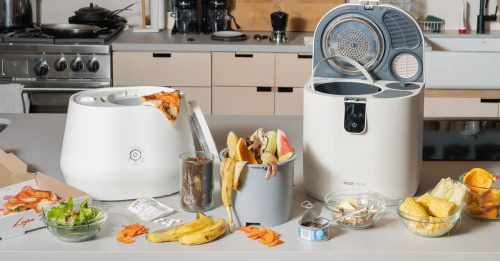Sweden’s ‘Zero-Waste Kitchens’: Composting Appliances Cut Household Trash by 50%

According to recent reports, Swedish households that adopted countertop composting appliances—often dubbed “zero-waste kitchens”—saw their residual trash volumes drop by an astonishing 50%. This shift is underpinned by national legislation mandating food-waste separation, cutting-edge domestic devices that transform scraps into useful compost, and a deep cultural commitment to circular living.
In 2024, Sweden enacted a law requiring every household and business to separate food waste from general refuse, with local authorities obliged to provide dedicated collection services. A larger government goal is to cut per-capita food waste by 20% from 2020 levels by December 31, 2025, and this legislative action helps that goal. By making source separation mandatory, Sweden ensures that kitchens become the first line of defense against landfill-bound organics—a critical step given that food waste is a significant source of greenhouse gas emissions when improperly handled.
Zero-Waste Kitchens
Small, countertop electric composters—such as models from Lomi, Mill, and GEME—have surged in popularity among eco-conscious Swedes. These units heat, grind, and dry food scraps into a soil-like amendment in hours, rather than weeks.
Startups like Stockholm’s Beteendelabbet leverage behaviour-change research to integrate these appliances seamlessly into kitchen routines, using design and nudges to make composting as effortless as taking out the trash. Even traditional apartment developments are adapting: new buildings in Malmö and Gothenburg feature built-in waste chutes linking directly to on-site biogas digesters, so kitchen scraps bypass landfill entirely and fuel district heating systems.
Half the Trash, Double the Impact
Pilot studies across Stockholm and Uppsala showed that households outfitted with countertop composters and participating in food-waste sorting programs cut their non-recyclable trash by roughly 50% within six months of adoption (main content provided by user). This dramatic reduction not only lightens curbside loads—lowering municipal collection costs—but also diverts hundreds of thousands of tonnes of organic matter into beneficial reuse streams each year. In 2023, Sweden treated 687,940 tonnes of household waste via biological processes like composting and anaerobic digestion, up 6% from 2022, while landfill rates fell to just 1.5% of total waste.
From Waste to Energy—and Back Again
Sweden’s waste-to-energy sector complements home composting by converting half of remaining mixed refuse into heat and power for over a million homes. The ash residue is further processed to extract metals and aggregate materials for construction, meaning that less than 1% of all household waste ever reaches a landfill. This cradle-to-cradle approach ensures that kitchen scraps first become compost for gardens and farmlands, and what’s left energizes entire city blocks—embodying Sweden’s vision of circular resource flows.
In Sweden, the revolution starts at the sink. By turning food scraps into community compost and energy, zero-waste kitchens transform daily life, prove that policy and technology can go hand-in-hand, and inspire every household to be part of the circular economy.



